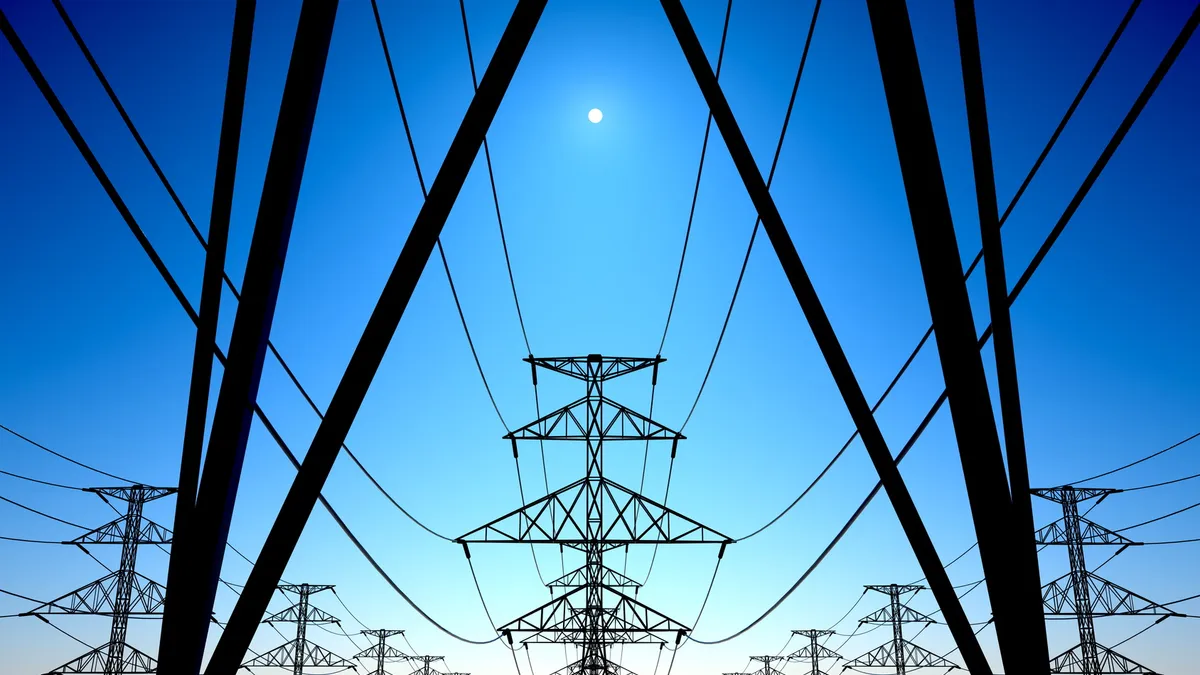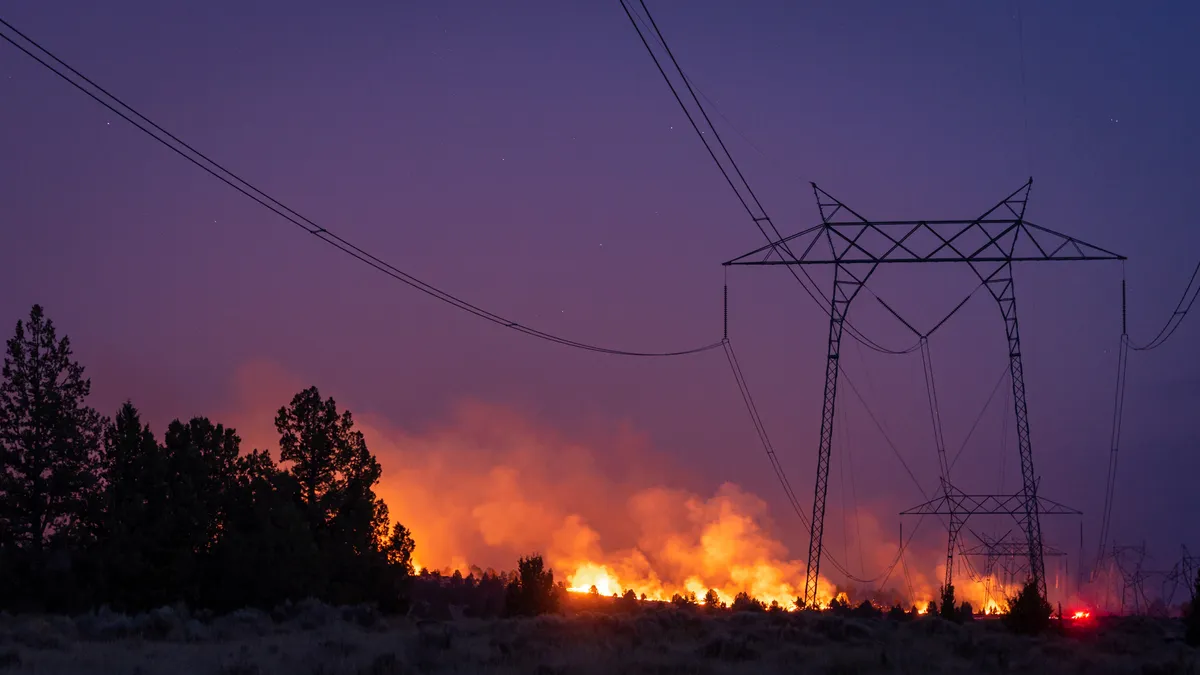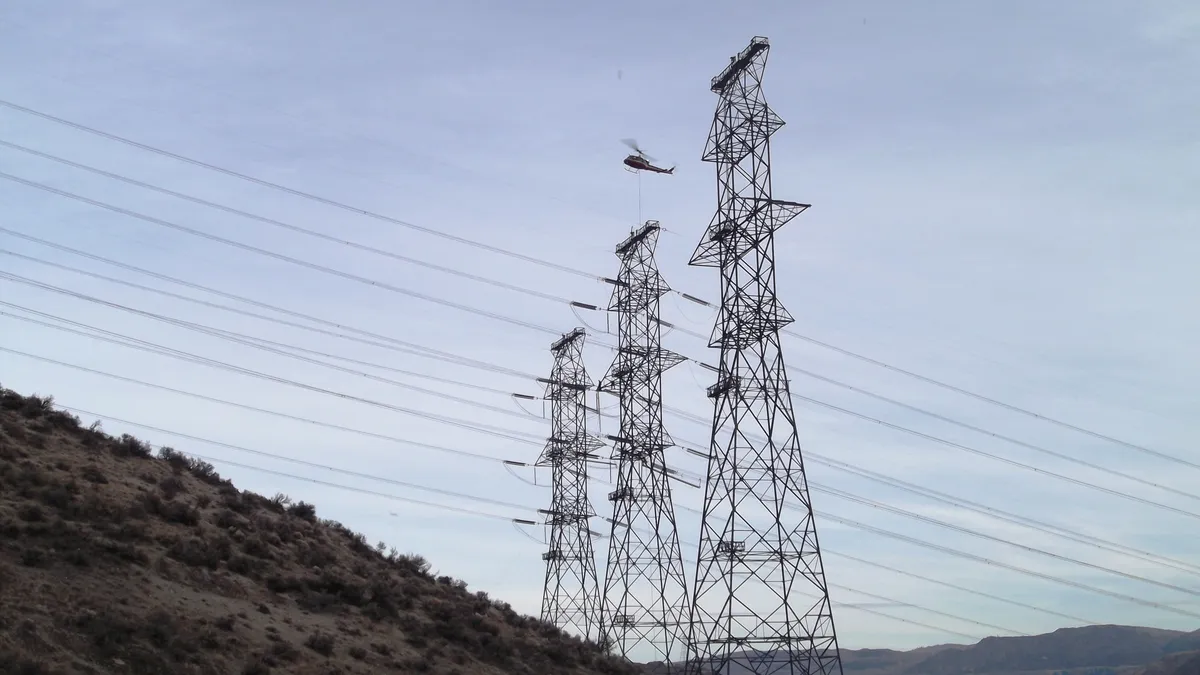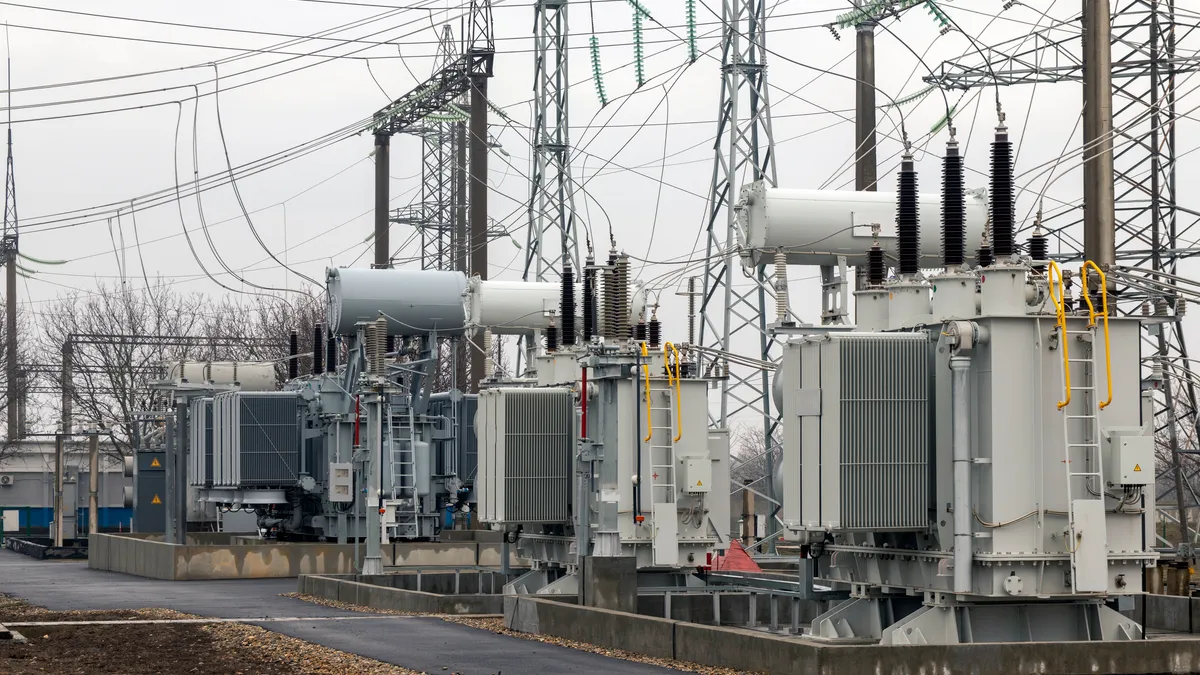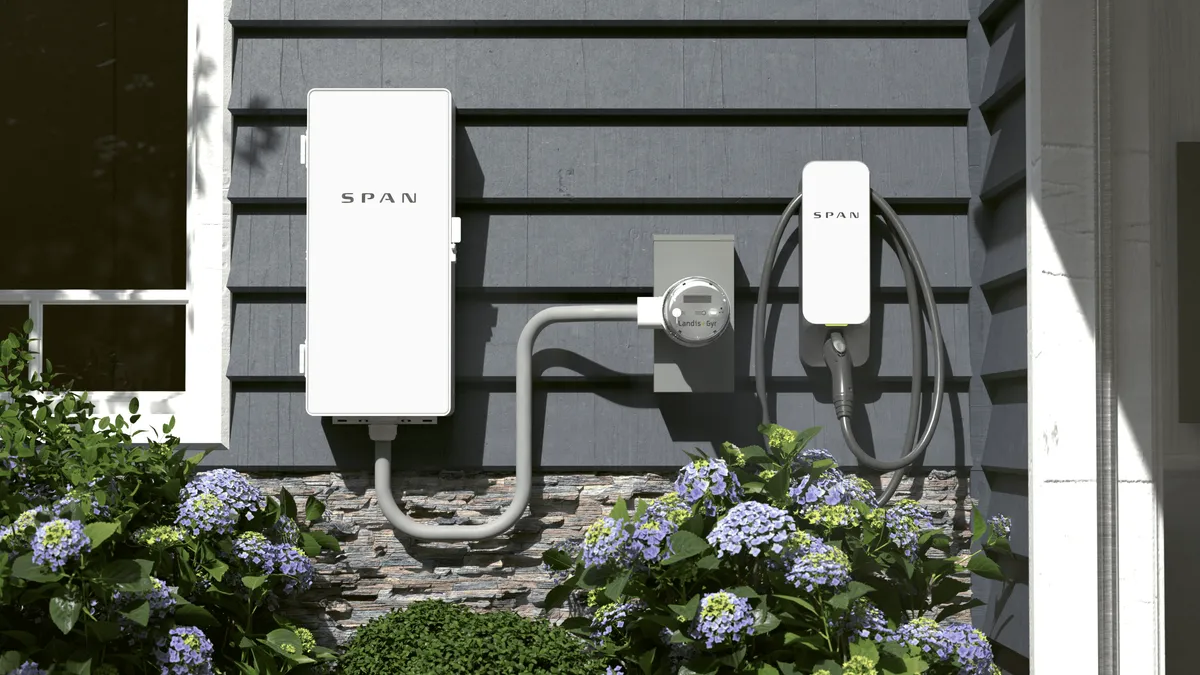Across the nation, there’s few topics are hotter with state utility regulators than grid modernization.
From California and New York to Hawaii and Rhode Island, public service commissions are opening regulatory dockets to investigate how best to upgrade the electric power grid to enhance its efficiency and integrate more clean energy technologies. Last week, Ohio became the latest, with regulators there launching the PowerForward initiative.
Grid modernization initiatives and the utility proposals they generate typically garner support from a variety of sector stakeholders. Distributed energy advocates and utilities alike embrace them, as grid upgrades to integrate more DERs can be put into the rate base. But in many states consumer advocates are pushing back, worried of unnecessary spending in the rush to upgrade the electric system.
In California, The Utility Reform Network (TURN) is raising those concerns in Southern California Edison’s general rate case. The utility’s spend would include $2.1 billion for grid modernization, resulting in a residential rate increase of 2.7% in 2018, 4.2% in 2019, and 5.2% in 2020.
“We are really concerned,” Spokesperson Mindy Spatt said. "This is an unprecedented increase in rates at a time when we know many people can hardly afford housing. When you add up the three years’ costs it looks horrific,” Spatt said.
TURN does not want the utility to compromise on safety or reliability, she added, but “just because something is shiny, new, and modern doesn’t make it cost-effective.”
This concern of “gold-plating the grid” is common among consumer advocates across the nation, Steve Hauser, CEO of the grid modernization advocacy group GridWise Alliance, recently told Utility Dive. In another recent instance, a critical legislator labeled a Missouri grid modernization bill a “utility tax” and argued it “allows utilities to invest without cause for higher returns.” A consumer advocacy group called it a “solution without a problem.”
The common charge from customer advocates is that grid modernization is spending on “the new new thing, whether or not it is the right thing,” Hauser said. But as metrics are developed to evaluate modernization issues, many are beginning to see that utilities “in many cases saved more than was spent.”
“It all goes back to who is willing to pay,” said Carl Monroe, Chief Operating Officer at the Southwest Power Pool (SPP), the grid operator for parts of nine states in the central U.S.
“I could build a more resilient system with great environmental benefits but it might cost more than participants would be willing to pay,” he said. “Metrics allow participants to answer the question of how much affordability they are willing to give up to get more performance.”
Defining those grid modernization metrics, however, can be difficult, said Michael O’Boyle, power sector transformation expert at Energy Innovation, a consultancy. Regulators may not have the tools and resources to answer important questions about utility investments.
O’Boyle is the co-author of a recent white paper — “Getting the Most from Grid Modernization” — that aims to shed light on that subject.
“Our paper defines metrics stakeholders and regulators can use to quantify or value and monitor the performance of grid modernization investments,” he said.
The paper is a five-step strategy for wisely designing a grid modernization program, O’Boyle said. “It defines the outcomes shareholders and customers want and shares the risks and rewards of the investments fairly between those who benefit from them.”
Grid mod’s many flavors
SPP’s Monroe sees several forms of grid modernization emerging, all with different tradeoffs between costs and benefits. One involves tools that increase an operator's ability to monitor and respond to system conditions.
“If we can understand something like limiting factors, we might be able to increase the load on the existing system and avoid costs to ratepayers for new transmission or generation facilities,” he said.
Those investments can often be quite cost-effective, as the cost of monitoring and data assessment hardware is significantly less than the capital expenditures to build new facilities, he added.
Real-time metering and real-time rates are examples of another type of grid modernization, Monroe said. Those options again provide more information but, in this case, the information is for “the load side,” he said. Real time metering tells users what their usage is and real time rates tells them what the cost of that usage is. Together, they allow users to make decisions about consumption.
“The more users have the opportunity to reduce use, if they see benefit, the more system operators can reduce the expenditures that go to new generation and transmission,” Monroe said.
The cost of a smart meter rollout allowing electricity users to make those decisions is significantly less than the cost of new generation and transmission, he added. And other new technologies can accompany the smart meter rollout, offering further usage information and control to consumers and expanding potential savings.
A third type of grid modernization involves system upgrades allowing operators to transition away from traditional generation to renewables and distributed energy, Monroe said. “It is a more expensive type of grid modernization and it is typically purpose-driven.”
The purpose might be to meet environmental performance metrics or to meet an affordability metric by shifting away from coal or natural gas to lower-cost wind generation, Monroe said.
Each type of grid modernization presents unique questions, said Jim Baak, grid integration program director at Vote Solar, an industry advocacy group.
In regions with high DER growth, one example may be the need to exchange one-way switches in the distribution system for bidirectional switches to accommodate the two-way power flows from rooftop solar.
“The utility solution is to replace all switches and related hardware and that sounds great because it would create the plug-and-play grid of the future,” Baak said. “But there are some circuits where the backflow will never happen because of the customers on them. Should the utilities be allowed to use ratepayer money for those circuits?”
The key question, he said, is “how much upgrading is necessary and how much can be avoided?”
Five steps to evaluate modernization
It is difficult to determine if something as complicated as a proposed utility expenditure for grid modernization is prudent, O’Boyle said.
The Energy Innovation paper summarizes the “risk vs. reward calculus” regulators must consider. It provides insight into whether proposed modernization investments can be replaced with DER and if the proposed expenditures are prudent or exceed the system’s need.
“Utilities can meet policy-mandated clean energy goals without doing a good job with grid modernization,” O’Boyle said. “It would simply be more expensive. The paper addresses the information asymmetry and allow regulators and stakeholders to know the utility is not gold-plating the system but is modernizing the grid in a way that accomplishes policymakers’ goals.”
The paper offers five key assessment steps and three measurable outcome categories. The metrics that define those three outcomes are “the center of this paper,” O’Boyle said.
Evaluating costs and benefits
A successful grid modernization program should start with an evaluation of the costs and benefits that can come from integrating DER into the present system. It is what is happening now in New York, California, Hawaii, and several other states, O’Boyle said.
“It requires an open and transparent integrated distribution planning process that includes the valuation of both demand side resources and what is coming from the supply side,” he said.
This process produces data that regulators and stakeholders need to set targets for grid modernization performance, the paper reports. With data-based targets, O’Boyle said, “regulators can choose the no-regrets grid modernization investments that get the most value out of both demand side and supply side assets.”
Defining policy goals
The next step is clearly defining policy goals based on the targets the planning process has identified as achievable with the existing system assets and the proposed utility investments.
The goals may differ from system to system but the important thing is that stakeholders “are on the same page with the full set of goals,” the paper reports. “This paper focuses on the three goals we consider most important. Investment to modernize the grid should yield: affordability, resilience, and environmental performance.”
The goals may not even pertain only to the power system, O’Boyle said. “It could be to stimulate the economy. And it might include increasing customer access to energy choice or enhancing cyber security.”
Linking metrics
Step three is linking metrics to the goals, and it is a particularly critical one, O’Boyle said. “Right now, this isn’t happening except in the evaluation of reliability.”
While grid resilience is not the same as reliability, using standard utility metrics for outage frequency (SAIFI) and duration (SAIDI) “is a good place to start,” the paper reports. The shortcoming is that reliability outages vary due to weather and other unpredictable events.
Longer-term averaging for those outages could be useful, it adds.
For affordability, the paper uses “peak demand reduction" and "system load factor” as the measures of affordability. "Overall program cost" and "bill savings per customer" are the most direct affordability metrics, but they are less in the utility’s control, the paper reports.
“If grid modernization is working, it is giving customers the ability to reduce consumption,” O’Boyle said. “By reducing the system peak and spreading the system load, grid modernization is eliminating the need for new capacity, which is the driver of most infrastructure capital investment.”
Environmental performance metrics show how grid modernization allows DERs to reduce system emissions and pollution in several ways, the paper reports. DERs reduce the use of other resources directly and by shifting peak demand. They also make the system more flexible, which increases access for variable renewables.
Illinois adopted “an emissions intensity metric (lbs/kWh) to guide its grid modernization efforts,” the paper reports. “The measurement determines the variable carbon value of a kilowatt-hour of electricity for all 8,760 hours in the year, to better understand which hours of the day are the dirtiest and help quantify the environmental benefits of grid modernization.”
Other metrics might show how deploying DERs can increase distribution system hosting capacity or the amount of electric vehicle charging possible, the paper adds.
Conforming targets
The fourth step is conforming targets for grid modernization to both its costs and benefits, based on the established metrics. That should be done through a transparent stakeholder process and it should allow the utility time, perhaps five to eight years, to achieve the targets, O’Boyle said.
For the utility, the targets should be “a stretch, but not an unreasonable one,” the paper reports. “This is ultimately more an art than a science.” That is why some places will set targets in individual utility rate cases and others will set them in independent processes based on benchmarks.
Tying revenue to performance
The final step prescribed by the paper is tying utility revenue to performance. Performance-based ratemaking is little-known to U.S. regulators but Energy Innovations sees it as “one of the tools that gives utilities incentives to integrate more renewable energy and reduce emissions,” O’Boyle said.
One option is “conditioning the total allowed rate of return for the full portfolio of grid modernization investments on achieving net benefits for customers, or on performance against the metrics,” the paper suggests.
Through this rate mechanism, utilities are rewarded will full recovery for the full performance that best serves customers.
A second option is a “budget cap” that allows “a pre-approved total level of expenditures not to be exceeded for grid modernization efforts over a particular period,” the paper adds. It would include a mechanism for sharing savings between utility shareholders and customers if the modernization comes in under budget.
This offers revenue certainty for utilities and an incentive to protect customers.
The billions about to be spent to modernize the U.S. electric grid represents “a monumental opportunity,” the paper concludes.
“This is a way,” O’Boyle added, “to make sure those billions are spent well."


